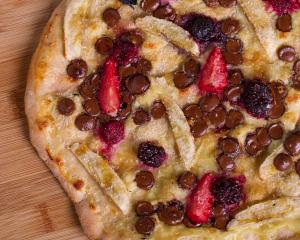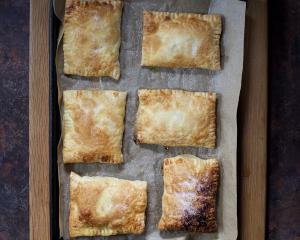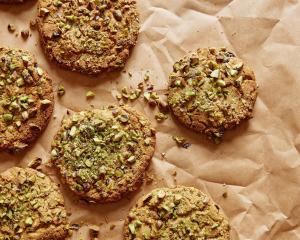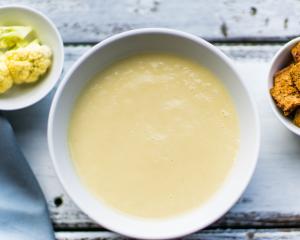
"It is only by cooking any recipe a number of times that I see how it could be simplified or improved. And it is not even enough that a recipe works: it needs to demand its way into my repertoire.
"If I don’t want to keep cooking it, I don’t want to waste your time with it."
Hence the title of her latest book — Eat, Taste, Repeat.
The book, she says, is one people can look at as a reassuring reminder of a routine that provides solace and structure, "anchoring us in what truly matters in life", or as a "draining encapsulation of the drudgery of cooking".
Lawson was writing the book when Covid-19 hit, so she talks about its impacts and the uncertainty in later chapters. One chapter, "Much Depends on Dinner", was originally about inviting people to dinner, something that is not an option in a locked down United Kingdom.
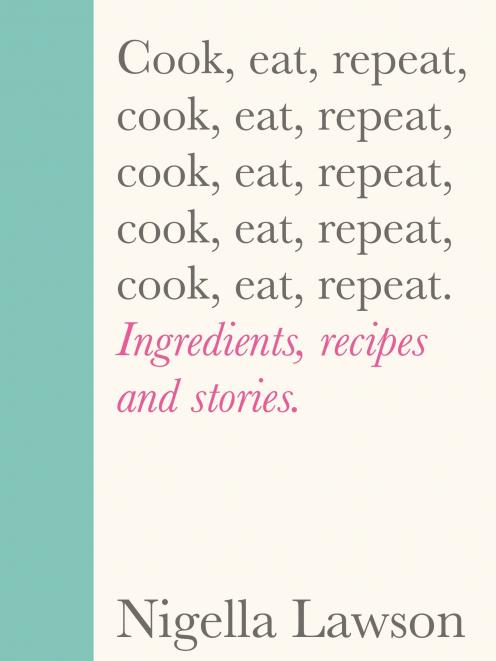
"Perhaps, over the months of the lockdown, many have learnt how misjudged our attitude to cooking can be. Yes, of course, it can be drudgery and it can be draining, but it is also a way to make a substantive difference to the emotional temperature of the days. There is so much around us that we cannot control, but food gives shape to our pleasures."
She talks about her role as a recipe writer, how she lives in fear of providing enough to eat or conversely inviting waste and the many pitfalls of providing too much detail or not enough.
"The recipes I write come from my life, my home. They tell a story and that story is mine."
The book focuses on many of Lawson’s favourite ingredients — from the undeniable "oomph" of salted or cured anchovies to the delight of spring rhubarb — and types of foods. There’s a chapter in defence of brown food — providing essays full of her trademark descriptions, tips and shortcuts as well as recipes.
Another chapter takes fire at those who use the term "guilty pleasure" as Lawson believes no-one should feel guilty about what they eat or the pleasure they get from eating.
"I am very aware that the joy I celebrate in food is a privilege. And for me, it’s vitally important not to belittle that, or to forget it. Taking pleasure in the food we eat is an act of gratitude. It’s such a waste otherwise."
Lawson also includes a handy glossary of make-ahead, store and freeze notes for individual recipes.
Chocolate, tahini and banana two ways

Makes 10 slices or
pudding for 2-3
250g (approx 2 medium) very ripe or
overripe bananas (skin-on weight)
60ml olive or vegetable oil
50g tahini, at room temperature (do try
to get proper Middle Eastern tahini,
which is smokier and more fluid with a
full-bodied velvetiness, than the more
widely available Mediterranean one)
50g full-fat Greek yoghurt, at room
temperature (but only for the pud)
1 large egg, at room temperature
50g caster sugar
50g soft dark brown sugar for the
pud; 35g for the bread
1 tsp vanilla extract
60g plain flour (or gluten-free plain flour)
25g cocoa
½ tsp bicarbonate of soda
¼ tsp fine sea salt
100g dark chocolate chips
1½ tsp sesame seeds, to sprinkle on top
(only for the bread)
Method
1. Heat the oven to 170degC/150degC fan if you’re making banana bread, or 180degC/160degC fan for the pudding.
Put a paper liner into a 450g loaf tin or, for the pudding, get out an ovenproof dish with a capacity of about 750ml; mine is 18cm in diameter and 5cm deep.
2. Peel the bananas and, either by hand or using an electric mixer, mash the bananas, then beat in the oil. I use an American quarter cup (60ml) measure to do this, and then fill it up with tahini (conveniently, 60ml of tahini weighs 50g) and beat that in. If you’re making the pudding, beat in the yoghurt (you can also fill the quarter-cup measure with it to get 50g).
Whether you’re making the pudding or the bread, now’s the time to beat in the egg, then the sugars and vanilla.
3. Whisk or fork together the flour, cocoa, bicarb and salt and slowly beat into the batter and when you can no longer see any specks of white, fold in the chocolate chips with a bendy spatula, which you will need to scrape the runny batter into either loaf tin or ovenproof dish. If it’s banana bread you’re making, sprinkle over the sesame seeds.
4. First, instructions for the bread: cook for 45–50 minutes until risen and firm to the touch, or until a cake tester comes out almost clean; some chocolate chips will make it a little sticky in parts. And don’t worry about the cracks on the top; that is part of its deal, as it is for the pudding. Let it cool completely in its tin on a wire rack and — if you can bear to wait — once it’s cold, slip it out of the tin and wrap it in baking parchment, then foil and leave it for a day before slicing and eating.
I understand if this is too much to ask; I confess I don’t always manage to wait.
5. And now for the pudding-cake: cook for 40–45 minutes, depending on whether you want it to have a gooey molten centre or not.
Once it’s out of the oven, let it stand for 5–10 minutes before diving in for that first squidgy spoonful.

Chicken in a pot with lemon and orzo
Serves 4-6
1 chicken (approx 1.5kg)
3 fat cloves of garlic
2 medium carrots (approx 300g)
2 medium leeks (approx 400g trimmed
weight, or approx 600g if you’re buying
them untrimmed)
15ml Tbsp olive oil
2 lemons
2 tsp dried tarragon (or dried thyme)
2 tsp sea salt flakes (or 1 tsp fine
sea salt)
½ tsp dried chilli flakes
1.5 litres cold water
300g orzo pasta
6 15ml Tbsp finely chopped flat-leaf
parsley, plus more to serve
freshly grated Parmesan, to serve
Method
1. Untruss the chicken, if it comes trussed, and remove all the string. If time allows, let it stand out on a board for 40 minutes or so to let the chill come off it. Heat the oven to 180degC/160degC fan.
2. Peel the garlic cloves, and peel and cut the carrots into three lengths across, and then into batons. Wash the leeks to remove any mud, if needed, and cut into approx. 2.5½cm rounds.
3. Heat the oil in a large heavy-based casserole with a tightly fitting lid; I use an enamelled cast-iron oval casserole 29cm long, in which the chicken fits neatly, leaving just a small space all around it to fit the vegetables later. Place the chicken in the hot oil breast side down to colour the skin; I do this over high heat for 3-5 minutes, or until the skin is richly golden. Then turn the chicken the right way up.
4. Take the pan off the heat and, aiming for the space around the chicken, finely grate in the zest from the 2 lemons, then grate or mince in the garlic (obviously some can end up on the chicken itself), add the dried tarragon (or thyme) and give a quick stir into the oil as best you can.
5. Scatter the vegetables around the chicken, followed by the salt and chilli flakes (if using), and squeeze in the juice from your zested lemons.
6. Pour in the cold water — covering all but the very top of the breast — and put back on high heat, then bring the pot to a boil. Once it’s bubbling, clamp on the lid and carefully transfer to the oven to cook for one and a-quarter hours, though check to make sure the chicken is all but cooked through and the carrots soft.
7. Take the pot out of the oven, and add the orzo all around the chicken, and push it under the liquid, giving something as approximating a stir as you can manage in the restricted space. Put the lid back on, and return the casserole to the oven for another 15 minutes, by which time the orzo should be soft and swollen.
8. Let the casserole stand, uncovered, out of the oven for 15 minutes before serving. The orzo will continue to soak up the broth as it stands.
9. While you’re waiting, chop the parsley. Stir in 4 tablespoons, and then sprinkle over a little more. You could shred the chicken now, but it looks so wonderful in its pot I like to bring it to the table whole.
10. Place a dish by the casserole, and then pull the chicken gently apart with a couple of forks, removing any bones and skin that come loose to the dish. (For me, these bits are a particular treat: I live for the cartilage.) I find it easiest to do this while the chicken’s still in the pot but, if you prefer, you can try to remove it to a carving board; go carefully as it’s likely to fall to pieces a bit as you do so. Stir the chicken and orzo again and ladle into bowls, sprinkling with parsley as you go. You may also want to offer Parmesan to grate over. I prefer it without, but there is a strong pro-Parmesan contingent in my house.



